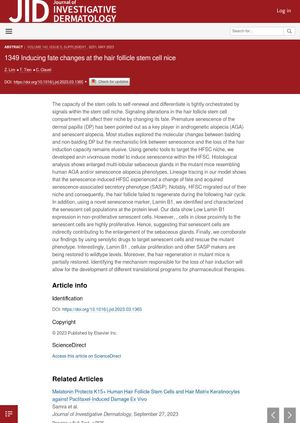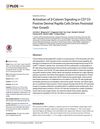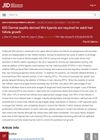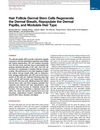Inducing Fate Changes at the Hair Follicle Stem Cell Niche
April 2023
in “
Journal of Investigative Dermatology
”

TLDR The study found that aging hair follicle stem cells change behavior, leading to hair loss, but drugs targeting these cells may help restore hair growth.
The document discusses a study that explores the role of premature senescence of the dermal papilla (DP) in androgenetic alopecia (AGA) and senescent alopecia. The researchers developed a mouse model to induce senescence within the hair follicle stem cell (HFSC) niche. The results showed that the senescence-induced HFSC experienced a change of fate and acquired a senescence-associated secretory phenotype (SASP). This led to HFSC migration out of their niche, resulting in the failure of hair follicle regeneration. The study also identified a novel senescence marker, Lamin B1, which showed low expression in non-proliferative senescent cells. However, cells near the senescent cells were highly proliferative, suggesting that senescent cells indirectly contribute to the enlargement of the sebaceous glands. The use of senolytic drugs to target senescent cells partially restored hair regeneration in mutant mice and returned Lamin B1, cellular proliferation, and other SASP markers to wildtype levels. This research could aid in the development of pharmaceutical therapies for hair loss conditions.



